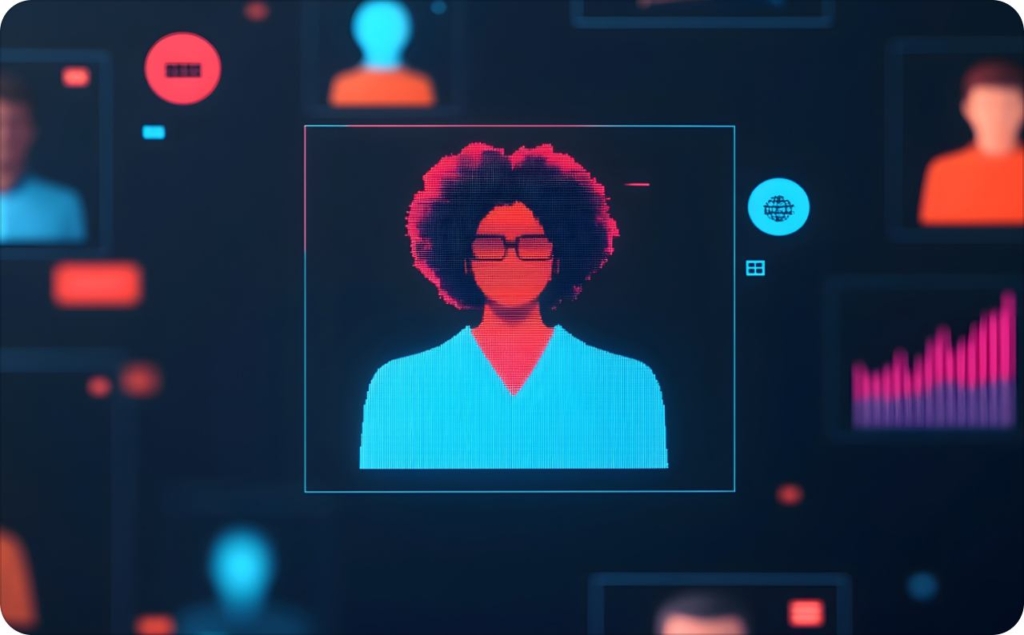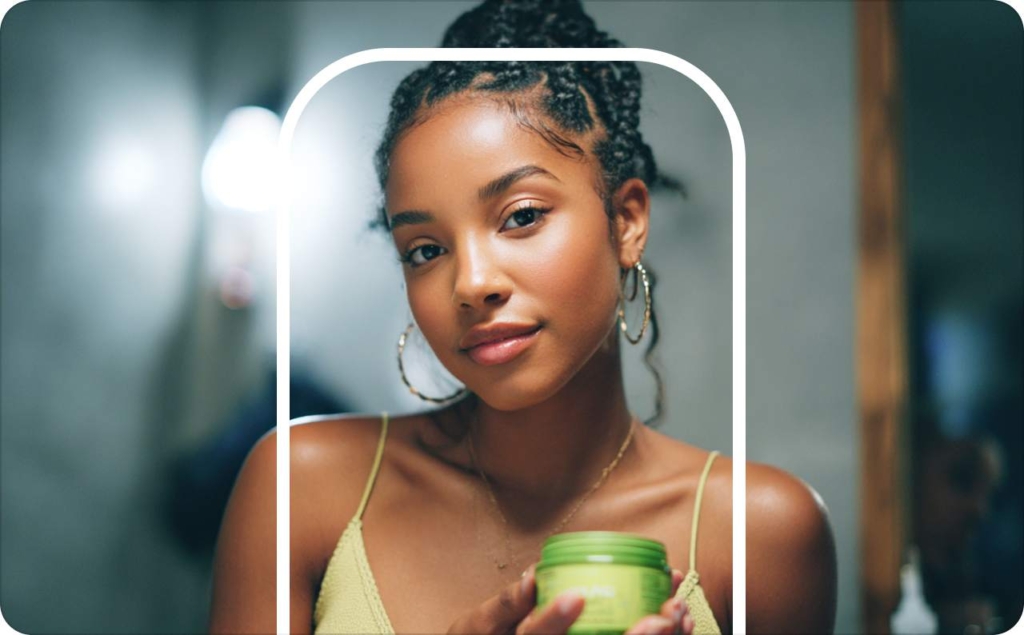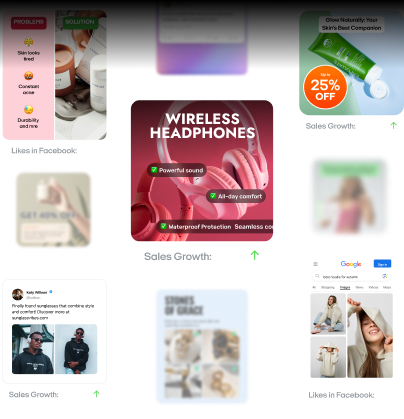Emotional appeal in advertising: 20 examples that actually work in 2025
Want to know why emotional ads work so well in 2025? Zeely AI reveals how emotional appeal in advertising drives deeper connections and real results.
You see in emotional appeal advertising examples that feelings shape attention, memory, and choice. In the emotional appeal in advertising examples below, you’ll watch how brands use psychology, storytelling, audience values, and brand identity to move people.

What is an emotional appeal in advertising?
Emotional appeal in advertising uses feelings like joy, fear, pride, nostalgia, or belonging to grab attention, increase recall, and trigger action. A brand pairs a core emotion with story, visuals, music, and copy so messages feel meaningful and guide quick decisions when features alone cannot differentiate.
When you talk about pathos, you talk about the emotional route to persuasion. It sits alongside ethos, which builds credibility, and logos, which appeals to logic. If you need the emotional marketing definition in plain words, it is using emotion to make messages memorable and useful for your audience.
Here is the difference between emotional and rational advertising explained in one line: rational ads highlight facts, ratings, and prices, while emotional ads show moments that create empathy, trust, or pride. In regulated categories such as healthcare or finance, you pair emotion with proof to stay credible and safe, which is why pathos ethos logos in advertising examples remain a helpful frame.
Types of emotional appeals
When you look at types of emotional appeals in ads with visuals, you see how each feeling can change attention, recall, and action. This is how advertisers apply pathos, the classical appeal to emotion in rhetoric. Below you’ll find how different emotions work, when to use them, and how to keep them effective and ethical.
Joy and delight — celebration, surprise, reward
Joyful ads connect your brand with happiness and optimism. They work especially well for launches, seasonal promotions, or campaigns designed to spread quickly. By sparking delight, you create positive memory hooks that people want to share.
- Creative cues: bright colors, upbeat music, smiling faces
- Copy focus: excitement, energy, benefits
- Guardrail: avoid exaggeration or false promises
- KPI: shares, engagement, positive sentiment
Belonging and community — identity and tribe
This appeal makes people feel like they belong to something bigger. It’s a strong fit for lifestyle brands, social campaigns, and loyalty-building. By showing “people like me,” you tap into identity and values.
- Creative cues: inclusive casting, groups, community symbols
- Copy focus: collective language like “together,” “our,” “community”
- Guardrail: avoid exclusion or stereotypes
- KPI: brand lift, saves, sign-ups
Nostalgia — retro visuals and memory cues
Nostalgia transports people back to simpler or happier times. It works best in rebrands, anniversaries, or holiday campaigns. A familiar song or image can instantly trigger strong recall.
- Creative cues: vintage visuals, throwback music, cultural references
- Copy focus: phrases like “remember when” or “back to”
- Guardrail: don’t rely only on past references, connect to present value
- KPI: recall lift, click-through rate
Fear or anxiety — risk to safety
Fear motivates action when you show a threat and then provide relief. You see this often in healthcare, insurance, and safety campaigns. Use urgency carefully, and always give a clear path to safety.
- Creative cues: high-stakes visuals, urgent tone, protective solutions
- Copy focus: urgency paired with reassurance
- Guardrail: avoid manipulation or targeting vulnerable groups
- KPI: conversions, urgency response
Sadness or empathy — cause-driven storytelling
Sadness encourages compassion. It is common in nonprofit and social impact advertising. By showing need, you create a powerful pull toward action, especially when you follow with hope or solutions.
- Creative cues: human faces, emotional music, storytelling arcs
- Copy focus: highlight need, invite action
- Guardrail: avoid over-dramatization or trauma exploitation
- KPI: donations, video completion, form fills
Pride and achievement — mastery and success
Pride taps into the satisfaction of accomplishment. This appeal fits education, fitness, luxury, and B2B marketing. By showing achievement, you align your brand with personal or professional growth.
- Creative cues: milestones, awards, strong visuals
- Copy focus: exclusivity, mastery, reward
- Guardrail: don’t alienate with elitist tone
- KPI: high-value conversions, upgrades
Awe and inspiration — scale and wonder
Awe creates amazement and motivates people through beauty or greatness. Travel, technology, and innovation campaigns use this appeal to position products as groundbreaking or life-changing.
- Creative cues: nature, space, large-scale visuals
- Copy focus: expansive words like “beyond,” “limitless”
- Guardrail: avoid vague claims without proof
- KPI: watch time, depth of engagement
Humor — surprise and timing
Humor works by entertaining and surprising. It is effective for mass-market products and viral social ads. A well-timed joke or reversal makes your ad memorable and shareable.
- Creative cues: playful visuals, punchline timing, incongruity
- Copy focus: short, witty lines
- Guardrail: avoid offensive humor or cultural insensitivity
- KPI: repeat views, shares
Trust — credibility and safety
Trust appeals show reliability and transparency. They are important in finance advising, healthcare, and for new or unfamiliar brands. Building trust reassures your audience and reduces risk.
- Creative cues: testimonials, guarantees, transparent visuals
- Copy focus: clear, factual, human proof
- Guardrail: avoid vague claims without evidence
- KPI: repeat purchases, trust scores
Anger or disgust — issue alignment
Anger and disgust highlight problems that need solving. Advocacy groups and challenger brands use them to spark urgency and align with causes. The emotion directs energy into action.
- Creative cues: injustice visuals, stark contrasts
- Copy focus: direct calls for change
- Guardrail: avoid polarization that alienates audience segments
- KPI: petition sign-ups, advocacy shares
Guilt, values, instant gratification — urgency and responsibility
This cluster of appeals drives quick action or ethical reflection. Brands use them in sustainability, health and wellness, and retail. Guilt pushes responsibility, values align with ethics, and instant gratification pushes fast decisions.
- Creative cues: earth imagery, ethical framing, countdown clocks
- Copy focus: urgency words like “today,” “don’t wait”
- Guardrail: avoid shaming tone or false urgency
- KPI: add-to-cart rate, brand perception shifts
Top 20 emotional appeal advertising examples
Coca-Cola – “Share a coke” (Joy / Belonging)
Coca-Cola replaced its logo with people’s names, transforming a mass product into something personal. This emotional appeal advertising example combined joy and belonging in a simple but viral way.
Why it works
- Personalization creates identity-based connection
- Joy makes the brand more memorable
- Belonging drives sharing and word of mouth
- Motivates purchases as social tokens
How to use it in your advertising
Personalize where possible — names, milestones, or cultural symbols. When customers see themselves in your brand, it becomes a social gesture as well as a product.
Google – “Parisian love” (Nostalgia / Love)
Google told a romance entirely via search terms, from “study abroad in Paris” to “how to assemble a crib.” Minimalist design amplified nostalgia and intimacy.
Why it works
- Simplicity boosts processing fluency
- Nostalgia deepens emotional recall
- Story arc engages attention and empathy
- Pairs brand utility with human moments
How to use it in your advertising
Tell stories with fewer elements. Let simple cues like text, sound, or imagery carry emotion. Nostalgia works best when your product feels invisible yet essential.
Nike – “You can’t stop us” (Pride / Achievement)
Nike split-screened athletes in different sports, syncing movements into one message of resilience. The appeal was pride and awe tied to achievement.
Why it works
- Pride elevates brand perception
- Awe makes content highly shareable
- Resilience mirrors universal struggles
- Links brand to empowerment
How to use it in your advertising
Position your audience as achievers. Use visuals of triumph over obstacles and tie your product to enabling progress. Pride campaigns inspire loyalty when rooted in authenticity.
WWF – “Last tree standing” (Fear / Urgency)
WWF used stark visuals of barren land with a single surviving tree. The message paired fear with urgency to spark donations.
Why it works
- Leverages loss aversion bias
- Fear intensifies recall of the brand
- Urgency drives immediate response
- Pairing relief channels fear into action
How to use it in your advertising
Show risks clearly, then resolve them with your offer. Fear campaigns succeed when you give people both a reason to worry and a way to feel safe.
Budweiser – “Puppy love” (Sadness / Empathy)
A puppy bonds with a Clydesdale horse, refusing to be separated. Music and story made this one of the most memorable Super Bowl spots.
Why it works
- Triggers empathy and compassion
- Storytelling increases narrative recall
- Sadness strengthens memory
- Emotional resolution ties back to brand
How to use it in your advertising
Anchor your product in heartfelt stories. Empathy-based ads stick because audiences retell them — your brand benefits from becoming part of that story.
John Lewis – Christmas ads (Nostalgia / Joy)
Every year John Lewis runs a Christmas ad with retro music and touching visuals. These have become cultural rituals in the UK.
Why it works
- Uses peak–end rule for recall
- Nostalgia creates emotional warmth
- Seasonal repetition builds anticipation
- Joy reinforces brand trust
How to use it in your advertising
Attach your brand to a recurring event. Seasonal nostalgia campaigns succeed when they tie tradition to consistent creative cues people await each year.
Always – “Like a girl” (Empowerment / Pride)
Always reframed “like a girl” from an insult into empowerment. By showing confidence, the brand shifted perception and won cultural relevance.
Why it works
- Reframing changes negative bias
- Pride empowers target audience
- Aligns brand with values and progress
- Sparks conversation beyond the product
How to use it in your advertising
Flip limiting narratives into positive ones. Empowerment appeals work when you give audiences a reason to feel proud of who they are.
Old Spice – “The man your man could smell like” (Humor / Surprise)
Old Spice used absurd humor and quick scene changes to refresh a legacy brand. The ad went viral across social platforms.
Why it works
- Humor improves recall
- Surprise rewards attention
- Virality extends ad lifespan
- Humor lowers resistance to sales messages
How to use it in your advertising
Use humor that matches your audience’s taste. Keep your product central to the joke so the laugh enhances, not overshadows, the brand.
Apple – “Think different” (Inspiration / Awe)
Apple honored innovators like Einstein and Gandhi with a poetic script. The ad positioned the brand as part of human progress.
Why it works
- Awe elevates brand authority
- Halo effect transfers greatness
- Minimalism makes message iconic
- Inspiration drives loyalty
How to use it in your advertising
Associate your brand with values bigger than your product. Inspirational appeals resonate when people feel they join a movement, not just buy a tool.
Airbnb – “Belong anywhere” (Community / Trust)
Airbnb showed real hosts and guests to build trust and belonging. The message was that anyone can feel at home worldwide.
Why it works
- Trust reduces perceived risk
- Belonging motivates participation
- Real stories create authenticity
- Aligns product with human need for connection
How to use it in your advertising
Highlight community over features. Trust appeals succeed when audiences see others like themselves using and enjoying your product.
P&G – “Thank you, mom” (Sadness / Pride)
P&G honored mothers supporting Olympic athletes. Gratitude and pride tied everyday caregiving to global achievement.
Why it works
- Gratitude strengthens brand sentiment
- Pride inspires audience admiration
- Emotional universality widens reach
- Humanizes a large brand
How to use it in your advertising
Show appreciation for overlooked supporters. Gratitude appeals resonate when you spotlight those who lift others, linking their strength to your brand.
Dove – “Real beauty sketches” (Empathy / Self-Esteem)
Dove asked women to describe themselves to a sketch artist, then compared it to how others saw them. The difference revealed hidden self-doubt.
Why it works
- Empathy builds emotional connection
- Exposes self-perception gaps
- Creates shareable conversation
- Deepens trust in brand authenticity
How to use it in your advertising
Focus on hidden truths your audience struggles with. Empathy-driven ads succeed when they reveal a better, more affirming perspective.
Snickers – “You’re not you when you’re hungry” (Humor / Relatability)
Snickers exaggerated behavior caused by hunger, then resolved it with their product. The humor made the campaign endlessly repeatable.
Why it works
- Relatable frustration builds empathy
- Humor makes recall easier
- Clear product resolution ties story back
- Scalable across cultures
How to use it in your advertising
Exaggerate relatable struggles your product solves. Relatability campaigns work when the solution is simple, central, and easy to remember.
WWF – “Earth hour” (Fear / Collective Action)
WWF encouraged people to switch off lights for one hour. The campaign blended climate fear with collective hope.
Why it works
- Fear heightens urgency
- Collective action builds momentum
- Ritual creates habit
- Simple gesture scales globally
How to use it in your advertising
Pair fear with a ritualized action. When audiences act together, they feel part of a movement and are more likely to keep supporting.
Samsung – “We’ll take care of you” (Trust / Reassurance)
Samsung highlighted aftercare and customer service. The ad positioned the brand as a reliable partner when devices fail.
Why it works
- Trust lowers purchase anxiety
- Service adds reassurance
- Reliability improves loyalty
- Aligns with audience need for safety
How to use it in your advertising
Show how you back up promises with support. Trust appeals work when customers believe your brand will be there in critical moments.
Heineken – “Worlds apart” (Community / Empathy)
Heineken paired strangers with opposing beliefs and let them bond before revealing differences. The campaign showed empathy breaking barriers.
Why it works
- Empathy reduces conflict
- Collaboration builds trust
- Surprise enhances message power
- Aligns brand with unity
How to use it in your advertising
Use shared tasks or experiences to show common ground. Empathy appeals succeed when your product becomes the connector between different groups.
UNICEF – “For every child” (Sadness / Guilt)
UNICEF showed stark child poverty visuals, then called for donations. The guilt was softened by a clear solution.
Why it works
- Sadness triggers compassion
- Guilt motivates corrective action
- Clear CTA relieves discomfort
- Authentic urgency boosts credibility
How to use it in your advertising
Show real consequences, but always give a path to redemption. Guilt appeals fail without clear, achievable actions audiences can take.
Mayo Clinic – “Answers” (Trust / Relief)
Mayo Clinic used patient stories and doctor expertise to build trust. Calm visuals made relief the central emotion.
Why it works
- Authority bias increases credibility
- Relief resolves audience anxiety
- Real testimonials show proof
- Trust builds long-term loyalty
How to use it in your advertising
Balance authority with human warmth. In healthcare and services, trust appeals succeed when they show both competence and compassion.
Shopify – “Let’s make you a business” (Pride / Achievement)
Shopify highlighted entrepreneurs building businesses with its tools. The message was about pride in self-achievement.
Why it works
- Pride strengthens identity with brand
- Self-efficacy motivates trial
- Stories make abstract tools relatable
- Achievement fuels repeat use
How to use it in your advertising
Celebrate your audience’s wins. Empowerment appeals succeed when people feel your product helps them succeed on their own terms.
Expedia – “Travel yourself interesting” (Nostalgia / Awe)
Expedia framed travel as the source of better stories. Nostalgia and awe made destinations feel irresistible.
Why it works
- Nostalgia enhances memory
- Awe inspires immediate desire
- Travel ties emotion to action
- Brand becomes enabler of experiences
How to use it in your advertising
Position your product as the gateway to experiences worth retelling. Nostalgia and awe make customers link your brand with moments they’ll cherish.
Channel playbooks
| Channel | Emotional hook | Why it works | Best practices | Example CTA idea |
| Facebook emotional ads examples with copy templates | Social proof & community cues | Native content blends in, social proof reduces hesitation, identity-driven copy boosts clicks | Use authentic photos, short copy, and relatable captions; integrate community stories | “Join the movement” / “See how others use it” |
| YouTube pre roll emotional ad examples that went viral | Hook in first 5 seconds | Immediate emotion beats the skip button, video+sound improve recall, shareability expands reach | Start with a laugh, surprise, or bold claim; pace fast; end strong with CTA | “Don’t skip this — see why” / “Watch the full story” |
| Instagram story emotional ads best practices | Immersive 15-sec storytelling | Vertical design dominates attention, urgency stickers boost action, influencers add authenticity | Use full-screen visuals, trending audio, countdowns, and relatable faces | “Swipe up to see more” / “Shop this moment” |
| TV commercial emotional appeal examples 2025 | Cinematic arcs in 30 seconds | Immersive audio-visuals boost recall, prestige builds trust, storytelling arcs stick | Use strong openings, emotional midpoints, and closing taglines; invest in cinematic visuals | “Experience it today” / “The story continues with you” |
| OOH billboard emotional advertising examples downtown | Instant impact at a glance | Bold imagery dominates, minimal text aids recall, high-frequency exposure reinforces message | Focus on one emotion; use bold contrasts, few words, and location-based relevance | “Look closer” / “Feel it here” |
To sum up
Emotional appeal advertising examples prove that campaigns built on joy, fear, pride, and nostalgia outperform feature-based ads. To make this work, you need the right tools. To truly scale emotional marketing, consider automation.
The Zeely app is an AI ad generator built for fast, effective campaigns. It creates static ads, video ads, and even full campaign automation in minutes — no agency required.
Why you need Zeely AI for automated ad creation
- Save time: Generate static or video ads in under a minute
- High-converting ads: AI hooks, CTAs, and emotional cues optimized for clicks
- Boost ROI: Reduce wasted spend with data-backed automation
- Easy ad creation: 100+ templates, AI avatars, and AI copywriting tools
- Scalable advertising: Bulk mode builds entire campaigns instantly
- Multi-platform integration: Publish directly to Meta, Instagram, and Shopify
- Creative flexibility: Adjust music, tone, and visuals without production crews
Zeely simplifies the entire process — from creative ideation to publishing and testing. For SMBs, e-commerce, or growing brands, this means you can launch professional campaigns without big budgets or agencies.
The takeaway:
Emotional ads work best when they’re consistent, optimized, and fast to produce. With Zeely’s automated ad creation, you can focus on strategy while the AI delivers high-converting creatives at scale.
Start building smarter campaigns with Zeely AI today and see how easy it is to create ads that actually convert.
Also recommended



